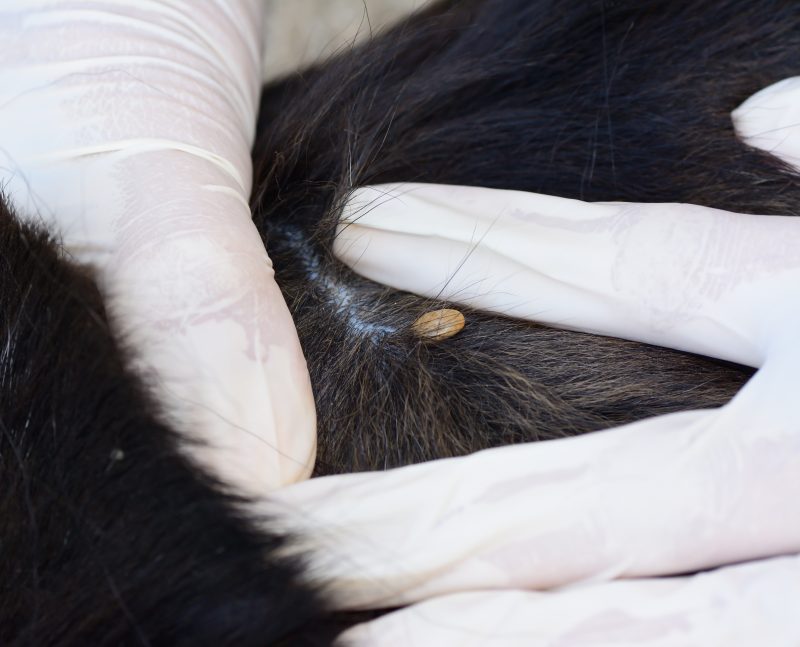Tick talk is not the most pleasant conversation. Ticks are unattractive, “gross” critters that nobody wants to have on their person, children or pets. Humans and pets need to avoid tick bites as ticks may transmit a variety of diseases such as Lyme, Erlichiosis, Anaplasmosis, Rocky Mountain spotted fever and tick paralysis.
Tick prevention was not considered a priority until very recent years, so what has changed? Believe it or not climate change and the changing migratory patterns of birds have greatly contributed to a tick population explosion in Ontario over the last 3-4 years. It used to be that Veterinarians only prescribed tick preventative to dogs travelling to areas such as the Ottawa valley, or travelling to the United States and other warmer countries. It can be confusing to figure out which ticks carry which diseases and that is why it is important to speak with your veterinarian as soon as you have discovered a tick. It is quite important that you keep the tick – do not discard it! It needs to be taken to your veterinarian to be identified.
Lyme disease is the most well-known tick born disease, as it has been a growing concern with humans in the last several years. The media has been reporting more cases, and more information about ticks and Lyme has become available to the public. Many types of ticks carry Lyme, “Canada is home to many species of ticks, but the Ixodes Tick – more often known as the “black-legged” or “deer” tick – is the most common Lyme-carrier.” (canlyme.com)
“Myth:
You can’t contract Lyme disease in the winter.
Truth:
An average Deer Tick lives for two years and can survive in very cold climates. Although infection rates drop in the winter, primarily because people spend less time outdoors – it’s still possible to contract Lyme.” (canlyme.com)
In Ontario, cases of tick-borne diseases are on the rise, in 2016 there were 1373 cases, so far in 2017, there have been 104 reported cases of Lyme disease in dogs (results for January 2017). In 2016 there were 138 cases reported of Erlichia and for January 2017 there are 12. In 2016 there were 97 cases of Anaplasma reported and so far for 2017, there have been 6. It is important to note that a blood test that your veterinarian can do called a 4DX will show Lyme, Erlichia, Anaplasma as well as Heartworm (although Heartworm is transmitted via mosquito bites and not tick bites). (Disease figures taken from real time reported results)
People often think that ticks that are only “out and about” in the warm weather, however, they come out looking for a blood meal as soon as the temperature is 4 degrees or above, in December 2015 there were over 20 days which the temperature was well above 4 degrees. It is now not uncommon for professionals to recommend a minimum of 9-month tick protection for their patients. It is also good to note that although it is most common to find ticks in wooded areas, nature parks, beaches and tall grasses and fields, ticks have been found on dogs walking in their suburban neighbourhoods on their sidewalks. If you find a tick on your pet and not confident in tick removal it is best to take your pet to their veterinarian for removal and identification. This is usually a no charge visit at most vet offices, however, it is recommended that a blood test is done 5-6 weeks after the tick exposure to ensure that the more common tick-borne diseases are not present.
Written by Tara O’Grady




